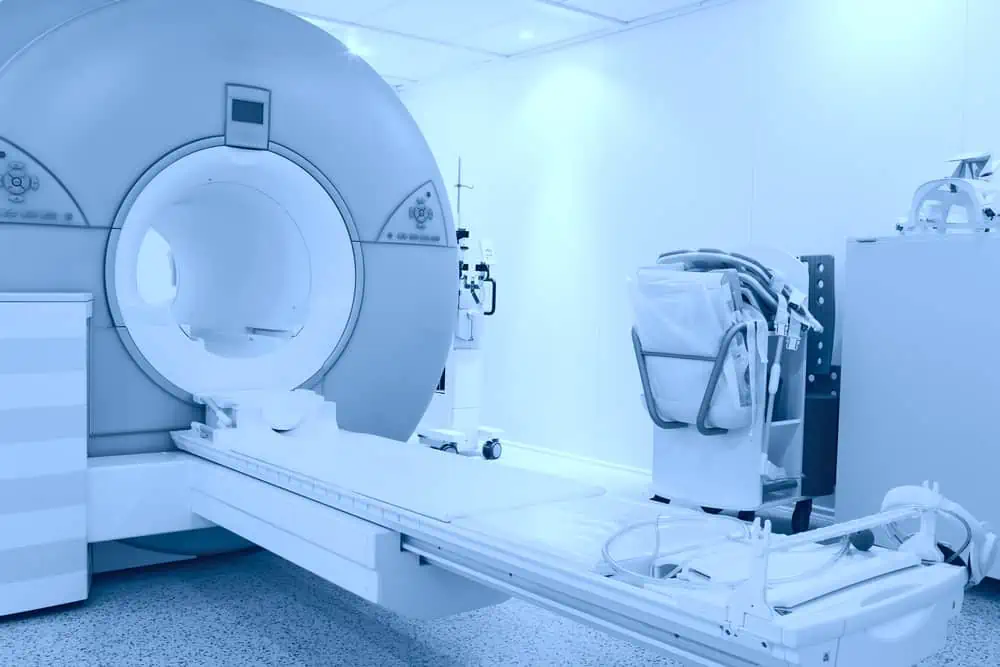Navigating the medical system is challenging. Insurance information, paperwork, and spending one-on-one time with the therapist are enough to put you into information overload.
Not quite sure what to expect at your first physical therapy appointment?
Don’t worry!
This article is a gold mine of information and tips that patients have asked me over the years.
By the end of this article, you will learn what to expect at your first physical therapy appointment to prepare with confidence.
Download the free checklist here.
- What is physical therapy?
- How to find a physical therapist
- What is direct access?
- Setting up your first physical therapy appointment
- Insurace tips
- What to bring to your first PT appointment
- What to wear to physical therapy
- The initial evaluation with your physical therapist
- Sample questions to prepare for your first appointment
- What’s next?
- Wrapping up
What is physical therapy?
Physical therapy is care provided by a licensed physical therapist to improve pain, strength, functional movement, and mobility, to help people move better and enjoy their lives.
According to the American Physical Therapy Association, physical therapists are movement experts, improving quality of life via prescribed therapeutic exercise, manual therapy and hands-on care, therapeutic modalities, and patient education.
Physical therapy is a broad specialty that can help many different conditions including orthopedic, post-surgical, neurological, women’s health, and many more.
This article is a follow up to what is physical therapy, and how can it help you? – be sure to check it out for more helpful hints.
How to find a physical therapist
Let’s start your patient experience from the beginning.
How do you find a qualified physical therapist?
There are several ways you can go about finding the right PT for you. It’s a good idea to explore several of these avenues.
Ask your physician
Your doctor’s office may recommend a therapist or a practice to you.
You’re also welcome to do your research and choose where you want to go. Here are some other ways to find the right physical therapist.
Friends & family recommendations
Friends and family can be helpful resources. Chances are, you know someone who’s had physical therapy. Ask around, and somebody will have recommendations for you!
ChoosePT.com
Choose PT by the American Physical Therapy Association (APTA) is a public website that has information about physical therapy, symptoms and conditions, and other physical activity information.
You can visit choosept.com to find physical therapists in your area.
Google local businesses
Searching “physical therapy near me” will list all local physical therapy clinics.
This list may be quite extensive!
If you’re searching for a specific type of physical therapy such as women’s health or vestibular rehab, include those terms to get the most precise results.
Ask your insurance company
You can also contact your insurance company or search their website for a list of covered providers.
What is direct access?
Many states now have direct access to physical therapy, allowing you to go directly to a physical therapist without a doctor’s prescription.
You may need to follow up with your doctor within 30 days (varies by state) to continue PT, but this allows you to access rehab services faster.
It may also depend on the particulars of your insurance plan.
Call your local PT office for information specific to your area.
Setting up your first physical therapy appointment
Your first point of contact with the physical therapy clinic will be making the appointment.
There’s a lot you can do to prepare before you even get there to make sure things run more smoothly.
If you have a preference for a male or female therapist or are looking for treatment for a specific condition (e.g. cardiac rehab or pelvic floor physical therapy), this would be the best time to ask so the front desk can match you up with the best therapist for you.
Other tips before your first physical therapy appointment
- Confirm that the office accepts your insurance
- Confirm the date, time, and location of the appointment
- Ask for any particular directions or landmarks to help you find it
- Ask for paperwork to be emailed to you in advance to save time
- Confirm your financial obligations and insurance coverage
Remember, being on time and ready to go at your appointment time means that you can maximize the amount of time you spend with the therapist.

Insurace tips
Find out what your financial obligations will be for physical therapy services, for example, co-pays per visit, deductibles, and other out-of-pocket expenses.
Nobody likes surprise bills!
Also, be aware if there’s a limited number of visits per year and when they reset. Many are per calendar year, but not all.
Some clinics may do this for you as a courtesy; however, it’s your responsibility to understand your insurance plan’s specifics, and it’s a good idea to follow up on your own.
Always keep records! You may want to dedicate a folder to keep all your physical therapy paperwork in one place, including home exercises that you will be given.
What to bring to your first PT appointment
- Prescription & name of the referring physician
- Insurance information
- Completed paperwork (if you received it in advance)
- A list of medications (including over the counter medications)
- Results of any medical tests related to your injury/condition, e.g., Xray or MRI results.
- Your calendar to book future appointments
- Anything else you feel is essential for the therapist to know
- Wear comfortable clothing that you can move and do exercises in, including appropriate footwear
- A family member if you want a second pair of ears to hear everything or if you will require assistance at home
Other tips tip prepare for your initial appointment
If you need reading glasses, don’t forget to bring them! There will be a lot of paperwork.
If you have an extensive medical history or take many medications, it might be easier to keep a file on your computer to print out. This saves time at each doctor’s appointment, and you are less likely to forget important details.
Be sure and thoroughly answer all of the medical history questions even if you feel it’s not related. Some physical therapy treatments are contraindicated with certain medical conditions, and your therapist needs your full medical history.
Always arrive early and build in some extra time so you don’t feel rushed and are able to spend the maximum amount of time with your therapist.
What to wear to physical therapy
You should always be prepared to move around a lot during physical therapy. Even if it’s your first appointment, there will be a physical examination.
Wear comfortable clothing that doesn’t restrict your range of motion and keeps you adequately covered.
Think about how easy it will be for the therapist to access the affected area during the physical exam. For example, a loose t-shirt or tank top is ideal for shoulder injuries. Dress shirts can limit your range of motion.
If seeking treatment for your knee, wear shorts or loose-fitting pants. Tight leggings and jeans are not good choices.
Wear appropriate footwear, such as sneakers.

The initial evaluation with your physical therapist
The average time for an evaluation is 45-60 minutes. During this time, the therapist will cover:
- A thorough history of your injury/medical history
- An examination of your movement, strength, range of motion, and any other specifics to your condition
- The therapist will discuss their assessment and recommendations for the types of treatments that would be beneficial
- Education on your injury/condition, and home program recommendations
- Depending on time and the complexity of your case, treatment may or may not be provided on the first day.
Sample questions to prepare for your first appointment
This may not be your first medical appointment for this injury, and it can be frustrating to have to tell your story repeatedly, especially if you feel like nothing has worked so far.
Try to keep in mind that your physical therapist has not heard your history before and needs to understand what you’re struggling with.
The more specific you can be, the better your therapist can help you. Take some notes with you to avoid important details from being lost in the shuffle.
Let’s go through some sample questions to help you prepare for your evaluation!
How/when did the problem start?
Your therapist may start with your overall medical history and the history of what brings you to physical therapy at this time.
Make sure to provide a complete medical history, even if you don’t feel something is related, it could affect which treatments are appropriate for you.
It may help write down key points, to provide a clear and concise timeline to your therapist. Be sure to include details like medications, injections, prior physical therapy, chiropractic treatment, or surgery.
Can you rate your pain on a scale of 0-10?
If pain is a reason that brought you in, you can bet your therapist will ask this question.
Everybody hates this question, but let me explain why it’s important and how to approach it.
Everyone’s perception of pain is different.
Pain rating is a tool to help document improvement in your pain and also may be required by your insurance company to help justify the need for physical therapy.
I like to break the scale down like this:
- 0 is no pain – we can agree on that.
- 1-3 is mild pain, maybe what some people like to call discomfort. It’s annoying but doesn’t necessarily stop you from doing anything.
- 4-6 is moderate pain. This level gets a little more difficult to ignore and might stop you from doing some activities.
- 7-9 is severe pain, making it difficult to concentrate on anything but the pain and will most likely stop you from doing activities.
- 10 is the worst possible pain imaginable.
Remember, you’re not competing with anyone. Everyone’s different, just answer honestly.
The physical therapist will also ask about the quality of your symptoms (sharp, dull, burning, achy) and what makes the pain better or worse.
What activities are you having difficulty with because of this injury?
This question relates to your overall function and how your injury limits your function.
The more specific you can be the better. Try to list 3-5 activities that have become painful/difficult since your pain started.
Common examples are:
- Painful or unable to reach into overhead cabinets
- Difficulty with climbing stairs
- Difficulty with walking X distance
- Difficulty with squatting down or forward bending
What are your treatment goals?
At first glance, this may appear to be an obvious question – Ummm, to feel better? – but your goals help your therapist design a physical therapy program that’s specific to you.
Again, try and be as specific as you can.
Sample goals:
- Get back to a daily 2-mile walk pain-free.
- Be able to climb up and down the stairs at home 5-6 times per day.
- Get back to playing basketball.
- Able to frequently pick up a toddler without pain.
What’s next?
After the evaluation, your physical therapist will discuss a personalized treatment plan with you and provide you with a home exercise program.
The number of visits required to reach your goals will depend on your injury, among other individual factors. You will likely need follow-up visits 2-3x per week for at least 4 weeks. Your PT will re-evaluate you every few weeks to determine your progress and adjust the plan if necessary.
While we all wish we could be cured in one visit with a wave of a magic wand, the reality is that physical therapy takes time and some good faith effort to see results.
The most success stories come from those who take an active role in their healthcare.
Here are some ways you can take an active role in your care to help you get the most out of physical therapy and reach your goals.
- Work with your doctor and physical therapist as part of a team.
- Take the time to learn about your injury/condition.
- Have specific goals to help your therapist design a program tailored to you.
- Commit to attending your sessions, staying present in the moment, and doing your home program.
- Manage expectations – speak with your physical therapist about realistic time frames to reach goals to avoid discouragement.
- Problem-solve with your therapist (if something isn’t working, speak up.)
- Listen to your body to avoid taking one step forward and two steps back.
Wrapping up
Your first PT appointment doesn’t have to be overwhelming.
Follow these tips to help make the process a positive patient experience and get the most out of your time with your physical therapist.
Download the free checklist of this article here!
featured image source: depositphotos.com







My dad had to go through physical therapy for both of his shoulders. It was rough on him but helped greatly. Thank you for sharing your insight on how to prepare for physical therapy!
These are some great tips. On my first visit I was wearing sandals and it was so uncomfortable. Your tip of wearing sneakers is something I wish I knew before. Thank you for sharing.
Thank you!